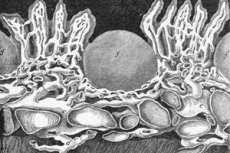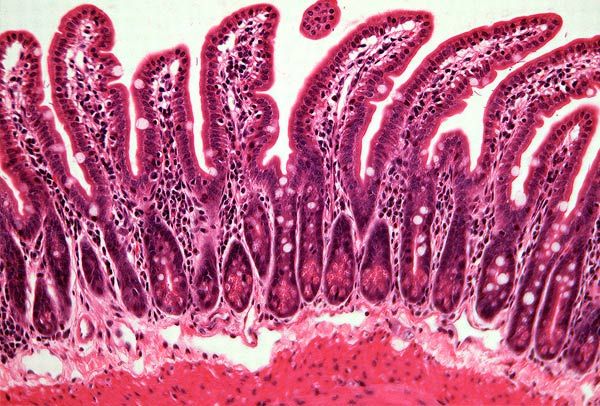The mechanism of fat burning is solved
Last reviewed: 30.05.2018

All iLive content is medically reviewed or fact checked to ensure as much factual accuracy as possible.
We have strict sourcing guidelines and only link to reputable media sites, academic research institutions and, whenever possible, medically peer reviewed studies. Note that the numbers in parentheses ([1], [2], etc.) are clickable links to these studies.
If you feel that any of our content is inaccurate, out-of-date, or otherwise questionable, please select it and press Ctrl + Enter.

Scientists representing the Scripps Research Institute have identified all the links of the mechanism that triggers the burning of fat in the intestinal cavity.
The study was conducted on nematodes Caenorhabditis elegans - these worms are often used for experiments as a simplified model of the human body.
It has long been known to scientists that the splitting of fat particles in the intestinal cavity is controlled by a neurotransmitter serotonin. But the exact mechanism of the hormone's influence on the process of fat burning has long remained a mystery.
During the study, nematodes sequentially removed various genes, until the loss of the connection between serotonin production and fat splitting was detected. It was this moment that corresponded to the shutdown of the gene responsible for the encoding of the FLP-7 peptide. Therefore, the process of fat burning is associated with this peptide.
For more information, scientists connected the peptide with a fluorescent red protein, and then observed the transport of the substance through the body of the worm. Such an experiment made it possible to establish all links in the chain of reaction control: chains of neurons of the brain, reacting to a signal about the presence of food masses in the intestine, promoted the formation of serotonin.
The same signal influenced the functioning of yet another kind of nerve cells, stimulating the production of the peptide FLP-7. For its part, the peptide stimulated the intestinal wall receptors, which corresponded to the release of substances that help in the cleavage of fat particles and transform these particles into free energy. To carry out these processes, the peptide has traveled from the brain structures to the intestines through the circulatory system.
It is noteworthy that specialists discovered FLP-7 in the animal body almost a century ago. However, at that time, it did not occur to anyone that there is such a close connection between the peptide and the lipid metabolism.
A succession of studies has also proved the fact that the artificially created increase in the level of FLP-7 accelerates the utilization of fat particles, without the development of any side effects: the nematodes continued their vital activity, but their fat reserves were "burned" more intensively.
Taking into account the information received during the research, the scientific experts made an unambiguous conclusion: soon it will be possible to establish the production of medicines based on the hormonal substance of the peptide FLP-7, which will make it possible to immediately dispose of the fat that comes with food, without undue consequences for the organism. Thus, people will be able to forget about the existence of diets for losing weight : it will be allowed to eat almost any food and at any time of the day. A new drug based on the peptide will allow you to digest food in full, without additional deposition of the fat layer in problem areas.

When the production of a new drug for weight loss is established, it is not known. Most likely, a few more studies will be needed to make sure that the information obtained is unmistakable. Nevertheless, most experts are positive about the speedy resolution of this issue.
